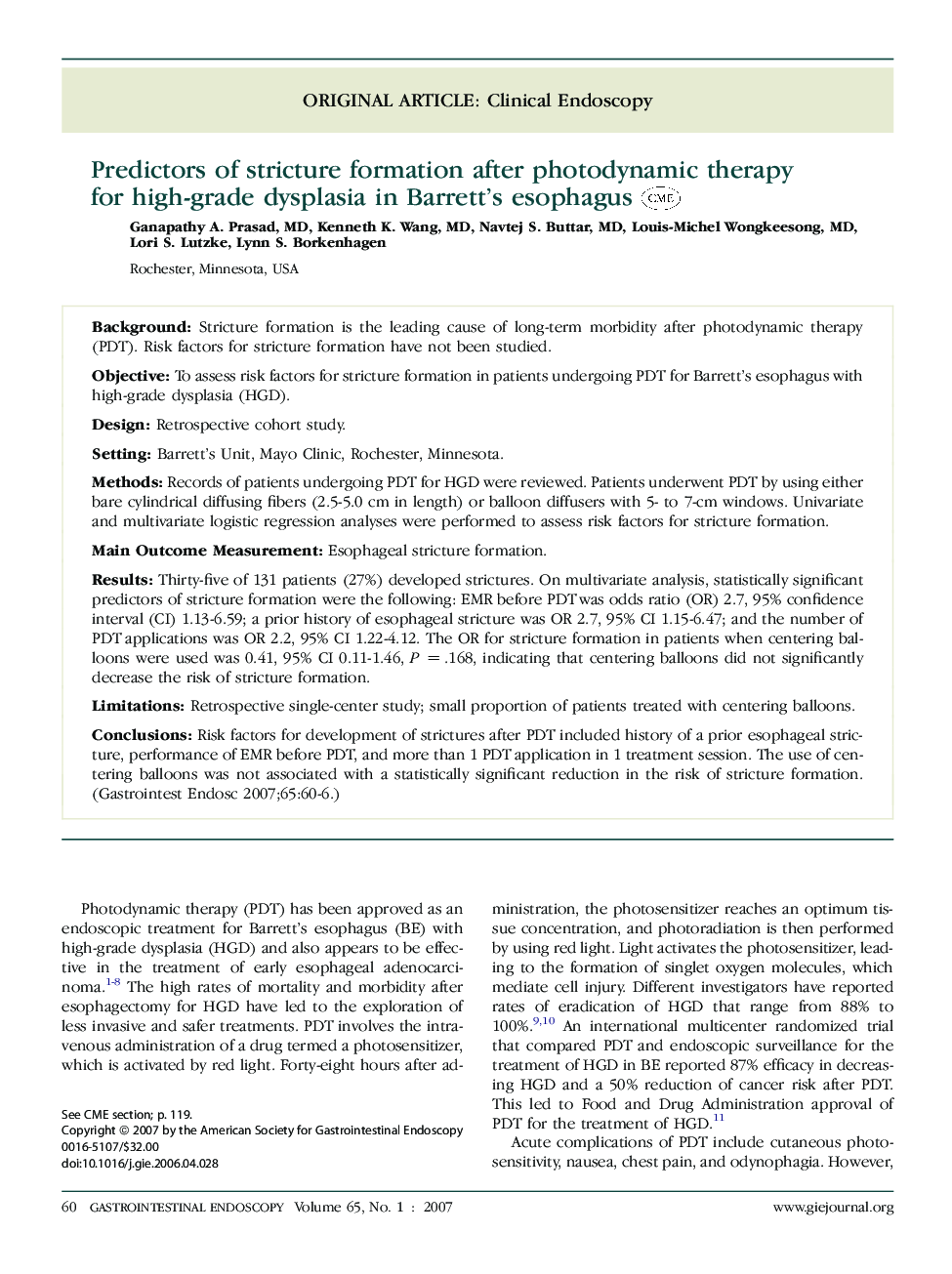| Article ID | Journal | Published Year | Pages | File Type |
|---|---|---|---|---|
| 3307776 | Gastrointestinal Endoscopy | 2007 | 7 Pages |
BackgroundStricture formation is the leading cause of long-term morbidity after photodynamic therapy (PDT). Risk factors for stricture formation have not been studied.ObjectiveTo assess risk factors for stricture formation in patients undergoing PDT for Barrett's esophagus with high-grade dysplasia (HGD).DesignRetrospective cohort study.SettingBarrett's Unit, Mayo Clinic, Rochester, Minnesota.MethodsRecords of patients undergoing PDT for HGD were reviewed. Patients underwent PDT by using either bare cylindrical diffusing fibers (2.5-5.0 cm in length) or balloon diffusers with 5- to 7-cm windows. Univariate and multivariate logistic regression analyses were performed to assess risk factors for stricture formation.Main Outcome MeasurementEsophageal stricture formation.ResultsThirty-five of 131 patients (27%) developed strictures. On multivariate analysis, statistically significant predictors of stricture formation were the following: EMR before PDT was odds ratio (OR) 2.7, 95% confidence interval (CI) 1.13-6.59; a prior history of esophageal stricture was OR 2.7, 95% CI 1.15-6.47; and the number of PDT applications was OR 2.2, 95% CI 1.22-4.12. The OR for stricture formation in patients when centering balloons were used was 0.41, 95% CI 0.11-1.46, P = .168, indicating that centering balloons did not significantly decrease the risk of stricture formation.LimitationsRetrospective single-center study; small proportion of patients treated with centering balloons.ConclusionsRisk factors for development of strictures after PDT included history of a prior esophageal stricture, performance of EMR before PDT, and more than 1 PDT application in 1 treatment session. The use of centering balloons was not associated with a statistically significant reduction in the risk of stricture formation.
